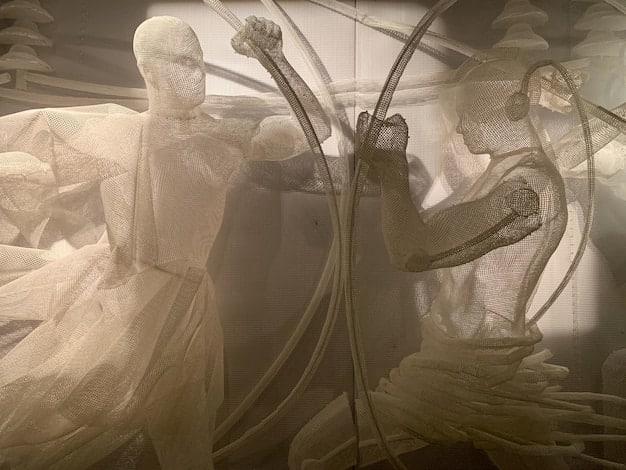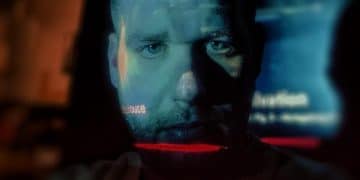Cultural References in Film & TV: A Spoiler-Free Guide

This spoiler-free guide explores how cultural references enrich film and television, providing viewers with deeper layers of meaning and connection without revealing specific plot details from any given work.
Delving into the intricate tapestry of cinema and television, one quickly recognizes that these mediums are far more than mere storytelling vehicles. They are cultural mirrors, reflecting and refracting the world around us. This guide, a true Spoiler-Free Guide: Understanding the Impact of Cultural References in Film and Television, aims to illuminate how these subtle (or sometimes blatant) nods to real-world history, art, language, and social norms elevate a narrative, offering richness and resonance without divulging any crucial plot points.
The Subtlety of Shared Understanding: What Are Cultural References?
Cultural references in film and television are the subtle or overt nods to shared knowledge within a given society or global community. These can range from a character humming a specific folk song to a visual gag mimicking a famous artwork, or even a line of dialogue that echoes a historical event or a well-known proverb. Their power lies in their capacity to create an instant bond between the creators and the audience, leveraging a common understanding that transcends the immediate narrative.
For a reference to resonate, it often requires a degree of familiarity from the viewer. This familiarity isn’t always about direct experience; it can be inherited knowledge, something learned through education, or simply absorbed through broad cultural osmosis. When successfully integrated, these references transform a passive viewing experience into an active engagement, inviting the audience to draw connections and unpack additional layers of meaning.
Types of Cultural References
Cultural references are not monolithic; they manifest in various forms, each serving a distinct purpose within the storytelling framework. Understanding these categories helps to appreciate the complexity and artistry involved in their deployment. Recognizing these types allows viewers to better identify and interpret the subtle cues embedded within their favorite shows and movies.
- Historical Allusions: Direct or indirect mentions of real-world events, figures, or eras.
- Literary & Artistic Echoes: Visual or thematic references to famous books, paintings, sculptures, or musical compositions.
- Pop Culture Nods: Homages or parodies of other films, TV shows, songs, or widely recognized public figures.
- Linguistic & Idiomatic Expressions: Use of specific phrases, accents, or slang that carry cultural weight.
Each type can offer unique insights, sometimes foreshadowing events, deepening characterization, or simply adding comedic value. The deliberate choice to include a particular reference often speaks volumes about the creators’ intentions and their understanding of their target audience’s shared cultural lexicon.
The beauty of cultural references is their ability to work on multiple levels. A casual viewer might enjoy a scene purely for its surface-level entertainment, while a more attentive or culturally informed viewer might catch a deeply embedded reference, unlocking a richer, more nuanced understanding of the narrative. This layered viewing experience is a testament to the power of thoughtful storytelling and the collaborative relationship between creator and audience.
Beyond the Screen: How References Mirror Society
Cultural references in film and television do more than just embellish a story; they act as a mirror, reflecting the societal values, beliefs, and anxieties of the time in which they are created. A film produced during a period of significant social change, for instance, might embed references to political movements, scientific breakthroughs, or shifting societal norms. These reflections can be overt or subtle, but they invariably offer a window into the prevailing ethos.
Consider how certain decades are immediately evoked through specific fashion choices, music genres, or even popular slang used by characters. These are not arbitrary inclusions; they are deliberate cultural markers that ground the narrative in a particular societal context. The effectiveness of these references often depends on their universality within the target culture, allowing a broader audience to grasp their significance almost instinctively. This mirroring effect can also serve as a form of social commentary, subtly critiquing or celebrating aspects of contemporary life.
Cultural Commentary and Archetypes
Filmmakers and screenwriters frequently use cultural references as tools for commentary. By referencing well-known legends, myths, or historical narratives, they can draw parallels to modern issues, offering fresh perspectives on timeless human struggles. These references can deepen the thematic complexity of a work, inviting viewers to explore underlying messages about power, identity, justice, or morality.
- Mythological Reminiscences: Drawing parallels to ancient myths and archetypes to explore universal human experiences like heroism, betrayal, or enlightenment.
- Political Undertones: Referencing specific political figures, ideologies, or movements to subtly comment on contemporary governance or societal structures.
- Social Stereotypes: Utilizing or subverting common stereotypes associated with particular cultural groups, often to challenge preconceived notions or for comedic effect.
- Economic Indicators: Hints at prevailing economic conditions, consumer habits, or class distinctions through subtle visual or verbal cues.
The use of cultural archetypes, for example, allows writers to tap into a collective unconscious. A character might embody the “trickster,” the “hero’s journey,” or the “wise old mentor,” immediately imbuing them with layers of meaning derived from centuries of storytelling tradition. When these archetypes are infused with culturally specific nuances, they become even more potent, resonating deeply with an audience familiar with their local manifestations.
Furthermore, the way cultural references are translated or adapted across different regions highlights the fluid nature of culture itself. A reference that might be immediately understood in one country could be entirely lost on an audience in another, necessitating thoughtful localization. This global dynamic underscores the importance of a well-informed audience and the enduring power of shared cultural knowledge in shaping our understanding of the world.

Enhancing Narrative: How References Deepen Storytelling
Cultural references are far from mere decorative elements in film and television; they are integral tools that deepen narrative layers, enrich character development, and provide contextual depth that a standalone story might otherwise lack. When skillfully woven into the fabric of a plot, these references can elevate the entire viewing experience, inviting a more active and engaged interpretation from the audience. They can provide shorthand for complex ideas, allowing creators to communicate profound concepts with concise efficiency.
A well-placed allusion can imply backstory, foreshadow future events, or add ironic commentary without explicitly stating it. For instance, a character quoting a line from a classic literary work might instantly convey their intellectual prowess or their romantic ideals. Similarly, a scene designed to mimic a famous painting can evoke a specific mood or theme, leveraging the audience’s existing emotional connection to the original artwork. This ability to layer meaning efficiently makes cultural references a powerful narrative device.
Character Development Through Cultural Cues
Cultural references can also be invaluable in sculpting compelling characters. The media a character consumes, the historical figures they admire, or the popular phrases they use, all contribute to painting a vivid picture of their personality, background, and worldview. This can be particularly effective in revealing unspoken truths about a character’s motivations or their internal conflicts.
- Reflecting Personalities: A character’s choice of music or their preferred historical era can subtly reveal aspects of their personality or their aspirations.
- Indicating Background: References to specific regional dialects, traditions, or common experiences can effectively communicate a character’s cultural or geographical origins.
- Foreshadowing Arcs: A character’s affinity for certain stories or myths can hint at their eventual journey or destiny within the narrative.
- Establishing Relationships: Shared cultural references between characters can illustrate a deep bond, a common history, or even subtle rivalries.
Moreover, the way characters react to or utilize cultural references can provide insights into their intelligence, their wit, or their level of cultural awareness. A character who misses an obvious reference might be portrayed as naive, while one who cleverly incorporates it into their dialogue might be seen as sharp and sophisticated. These subtle cues allow writers to create more dynamic and believable individuals, adding texture to the ensemble.
Ultimately, cultural references serve as a bridge between the fictional world on screen and the real world of the viewer. They create a sense of shared understanding and mutual recognition, transforming a passive narrative into an interactive dialogue. This deepens the viewer’s connection to the story and enhances their appreciation for the intricate craftsmanship involved in creating compelling cinematic and television experiences.
The Global Tapestry: Cultural References Across Borders
In an increasingly interconnected world, film and television productions are no longer confined by national borders. This global reach brings with it both opportunities and challenges for the use of cultural references. While some references are universal, transcending geographical and linguistic barriers—such as basic human emotions or universally recognizable visual symbols—many are deeply entrenched in specific regional, historical, or linguistic contexts. Navigating this complexity requires sensitivity and strategic thinking from creators.
When a film or series is distributed internationally, the interpretation of its cultural references can vary wildly. What might be an inside joke in one country could be completely unintelligible or even offensive in another. This necessitates careful consideration of how references will land with diverse global audiences. Sometimes, creators opt for more universal themes, while at other times, they embrace distinct local flavors, hoping they will be appreciated, even if not fully understood, by an international viewership, adding to the work’s authenticity.
Translation and Transcultural Adaptation
The process of localizing content for different markets often involves more than just direct translation; it frequently demands transcultural adaptation of references. A direct translation of an idiom or a proverb from one language to another might lose its meaning, its humor, or its cultural resonance entirely. In such cases, translators and localizers must find an equivalent cultural reference that conveys a similar meaning or achieves a similar emotional effect in the target language and culture.
- Idiomatic Equivalents: Replacing culture-specific idioms with local equivalents that convey the same sentiment or meaning.
- Historical Personages: Substituting references to lesser-known historical figures with more universally recognized ones that embody similar traits or roles.
- Pop Culture Parallels: Finding parallel pop culture phenomena in the target country to replace highly localized ones, ensuring the humor or commentary lands effectively.
- Visual Symbolism: Adapting visual cues or color symbolism, as their interpretations can differ significantly across cultures.
Furthermore, the rise of streaming platforms has made niche cultural content from around the world accessible to a broad audience, fostering a greater appreciation for diversity in storytelling. Viewers are increasingly exposed to and curious about cultural nuances from distant lands, which encourages creators to be bolder in their use of specific references, knowing that subtitle and dubbing teams can provide critical context or explanations where needed. This trend is slowly eroding the need for overly generalized content, allowing for more authentic and culturally rich narratives to emerge.
In essence, cultural references act as diplomatic envoys in the global media landscape, opening windows into different ways of life and fostering cross-cultural understanding. Their careful management is key to ensuring that stories resonate deeply, regardless of where they are consumed.
Decoding the Clues: Viewer Engagement and Interpretation
The presence of cultural references in film and television transforms viewing from a passive activity into an interactive puzzle. For the engaged viewer, spotting and decoding these clues becomes a rewarding experience, enriching their understanding and appreciation of the narrative. This active engagement encourages audiences to delve deeper, prompting them to research unfamiliar references or discuss their interpretations with others. It fosters a sense of intellectual curiosity and communal discovery.
The joy of recognizing a subtle nod to a historical event or a classic film can create a powerful “aha!” moment, a feeling of being in on a secret joke with the creators. This sense of shared knowledge strengthens the bond between the audience and the content. It also allows for multiple viewing experiences; a first watch might focus on plot progression, while subsequent viewings reveal layers of references previously overlooked, adding immense rewatch value to a production.
The Spectrum of Reference Clarity
Cultural references exist on a spectrum of clarity, from the overtly stated to the incredibly subtle. Understanding this spectrum helps differentiate between references designed for broad recognition and those intended for a specific, more knowledgeable segment of the audience.
- Direct Homage: Clear, unmistakable parallels or tributes that are easily recognized by most viewers.
- Subtle Allusions: Hints or suggestions that require a deeper cultural understanding or careful observation to detect.
- Meta-References: References that acknowledge the medium itself or the act of storytelling, breaking the fourth wall.
- Obscure Nods: Highly niche references known only to a very specific sub-group, often serving as an “easter egg” for dedicated fans.
The choice of clarity often depends on the creators’ intent. A broad comedy might use more direct and universally recognized references for maximum comedic impact, while a more art-house film might employ obscure allusions to reward a discerning audience. The deliberate placement of these references can also guide the viewer’s interpretation of a character or a scene, steering emotions or opinions in a particular direction.
Ultimately, the act of decoding cultural references transforms viewing into a dynamic process of discovery. It encourages active participation, sparks discussion, and deepens the overall satisfaction derived from a well-crafted story. This intellectual reward ensures that these embedded layers of meaning are not just appreciated but actively sought out by audiences worldwide.
Avoiding the Pitfalls: When References Fall Flat
While cultural references can significantly enhance a film or television show, their improper use can lead to confusion, alienate audiences, or even detract from the narrative. The art lies in their seamless integration, ensuring they serve the story rather than merely existing as an intellectual exercise for the creators. When references feel forced, obscure, or irrelevant, they risk pulling the audience out of the immersive experience, disrupting the flow of the narrative.
One common pitfall is overstuffing. A narrative laden with too many references can feel cluttered and overwhelming, making it difficult for the audience to focus on the plot or character development. Another issue arises when references are too niche or obscure, understood only by a tiny fraction of the target audience. While “easter eggs” for dedicated fans have their place, relying heavily on such references for core emotional or plot points can leave the majority of viewers feeling excluded and disengaged.
Misinterpretation and Cultural Inappropriateness
The risk of misinterpretation is also significant, especially in a globalized context. A reference intended to be humorous or poignant in one culture might be seen as offensive, trivializing, or simply nonsensical in another. This highlights the importance of thorough cultural vetting, particularly for productions aimed at international distribution.
- Loss of Context: References that rely heavily on a specific historical or social context which is not universally understood.
- Cultural Appropriation: Using elements from a culture without proper understanding, respect, or attribution, leading to misrepresentation or offense.
- Overly Niche: References so specific they only resonate with a tiny, insulated group, alienating the broader audience.
- Anachronisms: Inserting references that are chronologically out of place for the period depicted in the narrative, leading to a jarring effect.
Furthermore, the passage of time can render some cultural references obsolete or baffling to younger generations. A film filled with specific references to 1980s pop culture might be charming for those who lived through that era, but potentially baffling for viewers born decades later. Creators must weigh the timelessness of their work against the immediate gratification of contemporary references. The most effective cultural references are those that, even if initially obscure, can be understood within the broader context of the narrative or are timeless enough to endure.
Ultimately, the inclusion of cultural references should always serve the story, enhancing its themes, characters, or atmosphere. When they become an impediment to comprehension or connection, they fail in their purpose. Thoughtful and judicious application ensures that these powerful narrative tools enrich, rather than detract from, the viewing experience.

The Enduring Legacy: Cultural References as Time Capsules
Beyond their immediate impact on narrative and audience engagement, cultural references in film and television possess an enduring legacy: they serve as invaluable time capsules. From vintage fashion and slang to political anxieties and technological marvels, these embedded details capture the essence of the era in which a piece of media was created. Decades or even centuries later, these seemingly small references can offer future audiences profound insights into the societies that produced them, acting as cultural artifacts in their own right.
Consider how a film from the 1950s might subtly highlight gender roles, Cold War paranoia, or architectural trends of the period through seemingly minor set dressing or dialogue. These elements, though integral to the contemporary viewing experience, become historical markers, allowing viewers from different eras to glimpse the past through an authentic lens. This unexpected longevity transforms entertainment into documentation, providing a rich, qualitative record of human experience.
Preserving and Interpreting Societal Nuances
The layered nature of cultural references means they preserve nuances that might otherwise be lost to history. Academic scholars, historians, and cultural anthropologists often turn to popular media to understand the intangible aspects of bygone eras—the humor, the anxieties, the aspirations, and the everyday struggles that aren’t always captured in formal historical records.
- Social Attitudes: Reflecting prevailing attitudes towards race, class, gender, or new technologies.
- Everyday Life: Capturing mundane details of daily life, such as common household items, modes of transport, or recreational activities.
- Technological Milestones: Showcasing the cutting edge (or even the outdated) technology of the time, from rotary phones to early computers.
- Political Climate: Containing subtle critiques or celebrations of contemporary political figures, policies, or global conflicts.
Moreover, the re-interpretation of historical cultural references by new generations can spark fresh dialogues about societal progress and change. A joke that was once considered harmless might now be seen as insensitive, reflecting how societal values evolve over time. This dynamic interaction between past and present ensures that cultural references remain relevant, continually inviting new analyses and understandings.
In essence, cultural references are not just fleeting moments of recognition; they are vital threads in the vast tapestry of human history and creativity. They allow stories to transcend their immediate context, offering a timeless connection between creators, audiences, and the unfolding narrative of civilization itself. This makes the ability to understand and appreciate them a crucial skill for any engaged viewer.
| Key Aspect | Brief Impact |
|---|---|
| 🎭 Cultural Mirror | References reflect societal values, beliefs, and anxieties of their time. |
| 📖 Narrative Depth | They add layers of meaning, enrich character, and provide context. |
| 🌍 Global Reach | Navigating diverse audiences requires careful transcultural adaptation. |
| ⏳ Time Capsule | References preserve historical and societal nuances for future generations. |
Frequently Asked Questions
A cultural reference in film is an implicit or explicit nod to shared knowledge within a culture, such as historical events, artworks, literature, or societal norms. These references add layers of meaning to a narrative by connecting it to a broader cultural context, enriching the viewing experience for those who recognize them.
Filmmakers use cultural references to deepen narrative, develop characters, add humor, provide social commentary, and create a sense of shared understanding with the audience. They can act as storytelling shorthand, efficiently conveying complex ideas or emotions without lengthy exposition, thus enhancing viewer engagement.
Yes, cultural references can certainly be misinterpreted, especially by audiences unfamiliar with the specific cultural context. What might be humorous or poignant in one culture could be lost, confusing, or even offensive in another, highlighting the challenges of global content distribution and the need for careful adaptation.
Cultural references can profoundly impact character development by revealing aspects of a character’s personality, background, intellectual capacity, or worldview. A character’s connection to certain books, films, or historical figures can shed light on their motivations, values, or even foreshadow their journey within the story, making them more relatable and complex.
Absolutely. Cultural references serve as invaluable time capsules, preserving insights into the social, political, and cultural climate of the era in which a film or TV show was created. They offer future generations an authentic glimpse into past societies, helping historians and scholars understand the nuances of everyday life and prevailing attitudes.
Conclusion
The journey through the world of cultural references in film and television reveals them as more than mere narrative embellishments; they are essential threads weaving complex tapestries of meaning. From acting as societal mirrors to enriching character arcs and serving as historical time capsules, these subtle nods elevate storytelling, fostering deeper engagement and understanding. Recognizing their multifaceted impact transforms passive viewing into an active exploration, reminding us of the profound connection between art, culture, and the human experience.





